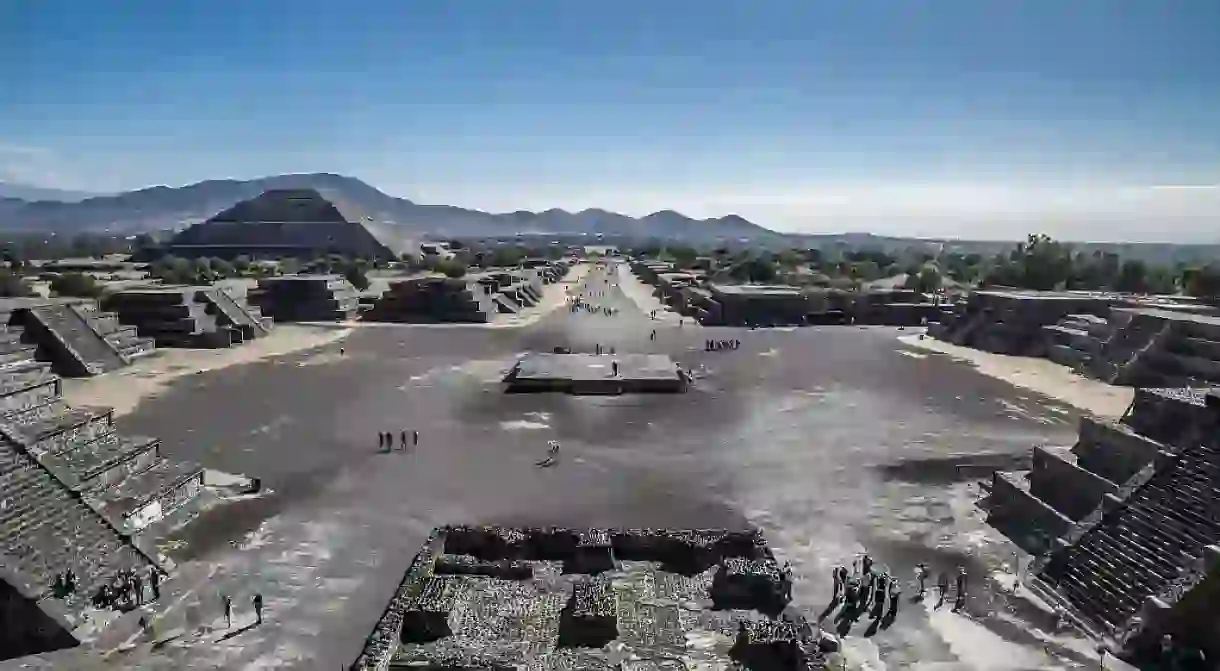Who Built Teotihuacan's Ancient City?

Sitting to the north-east of Mexico City, Teotihuacan is one of Mexico‘s most visited ancient architectural sites. This UNESCO-listed wonder attracts visitors from all over the world – but how did it begin, and who was responsible for creating it? Here’s everything you need to know.
Background
When the Aztecs stumbled upon the ruins of Teotihuacan in their conquest of the Valle de Mexico, the city had already long been abandoned. The Aztecs believed that it was the birthplace of the gods, and gave the city its name, ‘Teotihuacan’, meaning ‘home of the gods’. The Aztecs incorporated the ancient city into their creation myths, but present-day archaeologists have taken a more scientific route in trying to decipher who the original inhabitants were of this incredibly complex metropolis.

History
Teotihuacan is thought to have been the center of commerce in Mesoamerica from 100AD to 750AD. The obsidian mined in the land surrounding the city and knives made from it have been unearthed throughout North and Central America. During this period, the city’s economy and population was booming – between 150,000 and 200,000 people lived in Teotihuacan, making it similar in size to ancient Rome and Beijing during that period of history.
Layout
Among those living there included at least one master urban planner. All north-south walls and streets align exactly 15 degrees/25 minutes east of due north, and the city’s two major pyramids are positioned for particular stages of the sun and moon – the elements that they are today named after.
Archaeologists believe that the city held areas for various different kinds of ethnic groups, and many languages might once have been spoken there. Most structures are centered around the city’s main avenue called the ‘Avenue of the Dead’, and there are thought to have been one and two-storey structures there, as well as dozens of temples, and several housing complexes for royals or other important governing figures.

Hierarchy
Experts still have questions, but some believe that the city was tightly controlled by a group of elites that kept the lower classes happy by providing a high living standard for all citizens. It’s thought that sometime between 500AD and 750AD things started to sour in Teotihuacan and that standard of living started to drop. Some archaeologists believe that it was human-caused environmental degradation – the people of Teotihuacan had constant wood fires burning to melt the limestone they used to paint their structures – while others believe it could have been a shift in leadership.
Whatever the cause, there is evidence that the city experienced vast looting, burning and destruction, with a focus on the temples and homes of the elite. By 750AD the population was gone.

Teotihuacan today
Whatever the reason for its abandonment, the city remains an important part of Mexican culture and must-see on most tourists’ lists when they come to Mexico City. There are ‘recharging’ ceremonies on the days of the Spring and Winter equinox, and many devotees swear they can feel the deep cosmic energy of the pyramids when they come there to meditate. You can reach the top of the Pyramid of the Sun taking the 243 steps to the top, or just skip the hike and hire a hot air balloon to float you above it. Mornings and evenings at the pyramid are particularly stunning for photo opportunities.














